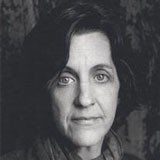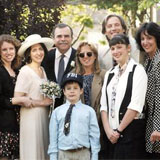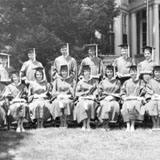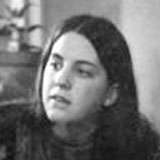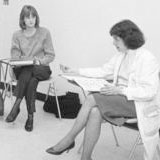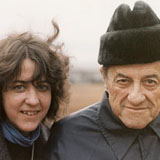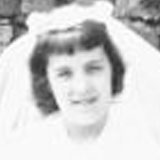Biography: Dr. Rita Charon

Year: 1987
Achievement: Dr. Rita Charon was the first recipient of the Virginia Kneeland Frantz Award for Outstanding Woman Doctor of the Year.
My father was a general practitioner caring for the French Canadian Population in Providence, Rhode Island. After being a primary school teacher, a school bus driver, and an activist in the peace movement, I realized that becoming a doctor seemed an ideal way to teach, to learn, and to try to bring about peace and justice. It was also my way of paying tribute to my father.
As director of the program in humanities and medicine and the clinical skills assessment program at Columbia University's College of Physicians and Surgeons, Rita Charon, M.D., developed an innovative new teaching method. The "parallel chart" system combined literature and medicine together to improve the doctor-patient relationship, and formed part of the only narrative competency course in a United States medical school in 1993.
Rita Charon was born in Providence, Rhode Island, in 1949. Her father was a physician caring for the French Canadian community in the area, and she eventually followed him into the profession after working as a teacher and volunteering as an activist in the peace movement of the 1970s. In addition to learning from her father's example, she hoped to combine her love of learning and teaching with rewarding and valuable work.
Rita Charon had studied biology and child education at the Experimental College of Fordham University in New York, graduating with a B.A. degree in 1970. Four years later, after her work as a teacher and her in the peace activist, she enrolled at Harvard Medical School. After graduating in 1978, she completed her residency at the Montefiore Hospital and Medical Center in the Bronx, New York.
Since 1982, Dr. Charon has taught at Columbia University College of Physicians and Surgeons. Beginning as an instructor in clinical medicine, she has risen through the ranks and was appointed full professor in 2001. While assistant professor and then associate, Dr. Charon also completed a master's degree in English in 1990, and a doctorate in 1999. In both she explored the role of literature in medicine, combining her love of both fields.
She has applied her interest in literary studies of medicine as director of the Program in Humanities and Medicine and the Clinical Skills Assessment Program at Columbia University. The program includes the only narrative competency course in a U.S. medical school, based on her "parallel chart" system. Dr. Charon developed the system to train her medical students to better empathize with their patients. To improve the doctor-patient relationship, she asks her students to keep a record of their own reactions to each case, their attempts to understand the patient's experiences, and the ways patients react to explanations and information given to them about their illnesses. The program has been running successfully since the mid-1990s and is highly praised by students involved.
Dr. Charon's respected role in medical education has been celebrated by numerous honors over the past thirty years. In 1987 she was the first physician to receive Columbia University's Virginia Kneeland Frantz Award for Outstanding Woman Doctor of the Year. She was named Outstanding Woman Physician of the year in 1996, and in 1997 she received the National Award for Innovation in Medical Education from the Society of General Internal Medicine.
What was my biggest obstacle?
It has all been very smooth. I think the relentless duty is the ongoing obstacle, or burden, of being a doctor. Even when you are not officially "on," you never stop being a doctor, if only for family members and friends. The level of responsibility I feel — even in offering what might seem to be trivial advice — is quite steep. So it goes.
How do I make a difference?
I hope I can listen to my own patients in a way that helps them to feel confirmed and helps them get better.
Who was my mentor?
I have two mentors, because I have ended up in two fields. My health care mentor is Elliot Mishler, a sociologist and linguist whose studies of doctor-patient communication taught me that my passion and place in medicine is in its language. My literature mentor is Steven Marcus, who supervised my English dissertation and taught me how to write.
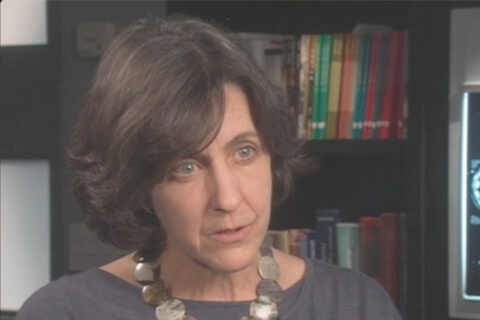
Asterix Dr. Rita Charon
Asterix Dr. Rita Charon
I wanted to find a way to help the students focus on what they themselves were going through, and a way to focus on what their patients had to endure in the course of being ill. It's a tremendous cauldron of experience, and I wanted to have a way to let them reflect, consider, think about what they themselves were going through. And so I made them write. And I invented the Parallel Chart. I told them every day you write in the hospital chart of your patients. You may have 3, or 4, or 5 patients, and every day you write in each chart, and you know exactly what to write. It's very proscribed. I told them, there are things that are critical to the care of your patient that don't belong in the hospital chart, but they have to be written somewhere. And I would say, if you're taking care of an elderly gentleman who has prostate cancer, and he reminds you of your grandfather who died of that disease, every time you go in his room, you weep. You weep for your loss, you weep for your grandfather. I said, you can't write that in the hospital chart. I won't let you. And yet, it has to be written. Because this is the deep part of what you yourself are undergoing in becoming a doctor. Only when you write do you know what you think. And there is no way to know what you think, or even what you experience, without letting your thoughts achieve the status of language. And writing is better than talking. We thought when we designed this chart, that by writing about their own feelings and by writing about patients, that the students would somehow mirror the patient. That if only they were imagining what must it be like for the patient to have an operation, to lose a leg-whatever the case was-that the simple act of imagining it would somehow make it easier for the student to get what the patient was going through and to be of help. This is what we call empathy-that you understand from the other person's perspective their experience. If you're not prepared for such profound emotional experiences, the natural, and probably only recourse you have, is to detach, and is to experience your work like this-from arm's length-and to hide behind the various barriers that we all hide behind, of objectivity, and 'I only have six minutes for each patient,' and all of that. Unless we can attend to the interior life, the courage, if you will, of our developing doctors, we will end up with doctors who flinch when things don't go well, who abandon patients when they're dying.




